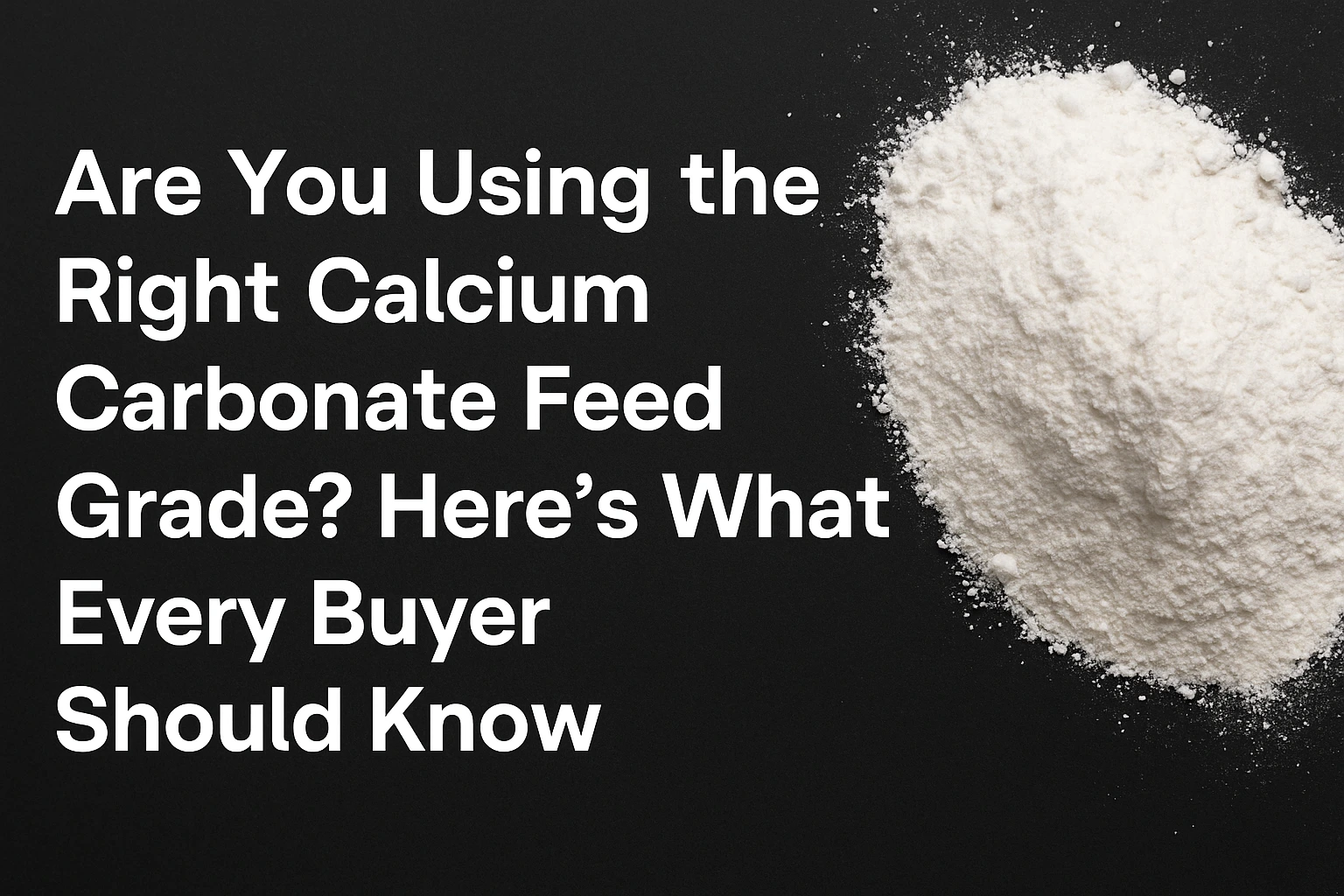Are You Using the Right Calcium Carbonate Feed Grade? Here’s What Every Buyer Should Know

Table of Content
-
Introduction: Not All Calcium Carbonate Is Created Equal
-
Essential Quality Criteria—Purity, Particle Size, and Safety
-
Bioavailability, Benefits, and Risks for Animal Nutrition
-
Supplier Selection: Global Market, Certification, and Documentation
-
Conclusion: Smarter Sourcing for Healthier Livestock
1. Introduction: Not All Calcium Carbonate Is Created Equal
Calcium carbonate (CaCO₃) is a staple of modern animal feed, but the actual quality can vary dramatically depending on raw material, processing, and supplier integrity. Poor grade or contaminated calcium carbonate can lead to health problems, reduced productivity, and costly feed reformulations. For buyers in 2025, understanding what separates a reliable feed grade from substandard material is essential for flock and herd health, especially as global livestock and poultry demand surges.
2. Essential Quality Criteria—Purity, Particle Size, and Safety
The best calcium carbonate for feed should provide:
-
High purity (≥95% CaCO₃): Ensures maximum calcium content and minimal heavy metal/impurity risk.
-
Controlled particle size: Fine powders (200–600 mesh) ensure rapid absorption for poultry/laying hens, while granules (0.5–3mm) benefit ruminants by providing slow-release calcium.
-
Zero contaminants: Iron (Fe₂O₃), heavy metals, and silica must be below 0.1% for animal feeding; high impurity levels can harm livestock and break regulatory standards.
-
Traceability and documentation: Certification to feed industry standards (FAMI-QS, GMP+, ISO 22000), batch-level traceability, and supplier lab reports are must-haves.
Buyers should always demand third-party test results or QA certification before purchasing in bulk.
3. Bioavailability, Benefits, and Risks for Animal Nutrition
Feed grade CaCO₃ plays several vital roles: supporting bone development, eggshell quality, muscle function, and optimal pH. High bioavailability means animals absorb more calcium, boosting productivity and health outcomes. If purity, particle size, or solubility are wrong, animals risk deficiencies, soft eggshells, or poor feed conversion. Recent research finds seashell and high-purity natural sources performing best in broilers and layers.
4. Supplier Selection: Global Market, Certification, and Documentation
The top suppliers are based in China, India, Vietnam, and Turkey—with Shandong and Hebei (China) leading production scale and lab verification. Reliable partners offer feed grade CaCO₃ with:
-
Batch certification & detailed lab analysis matching stated purity and particle specs
-
Global export capabilities, robust logistics, and custom packaging
-
Responsive technical support and transparent production processes
Prioritize ISO-certified, animal nutrition-focused producers over generic mineral traders for safety, compliance, and technical backup.
5. Conclusion: Smarter Sourcing for Healthier Livestock
Never assume all calcium carbonate feed grade is equal—buyer diligence matters. Insist on high purity, tested particle sizes, and proven supplier credentials. Smart sourcing delivers better growth, animal health, and feed ROI—future-proofing your supply chain for 2025 and beyond.

Leave a Comment